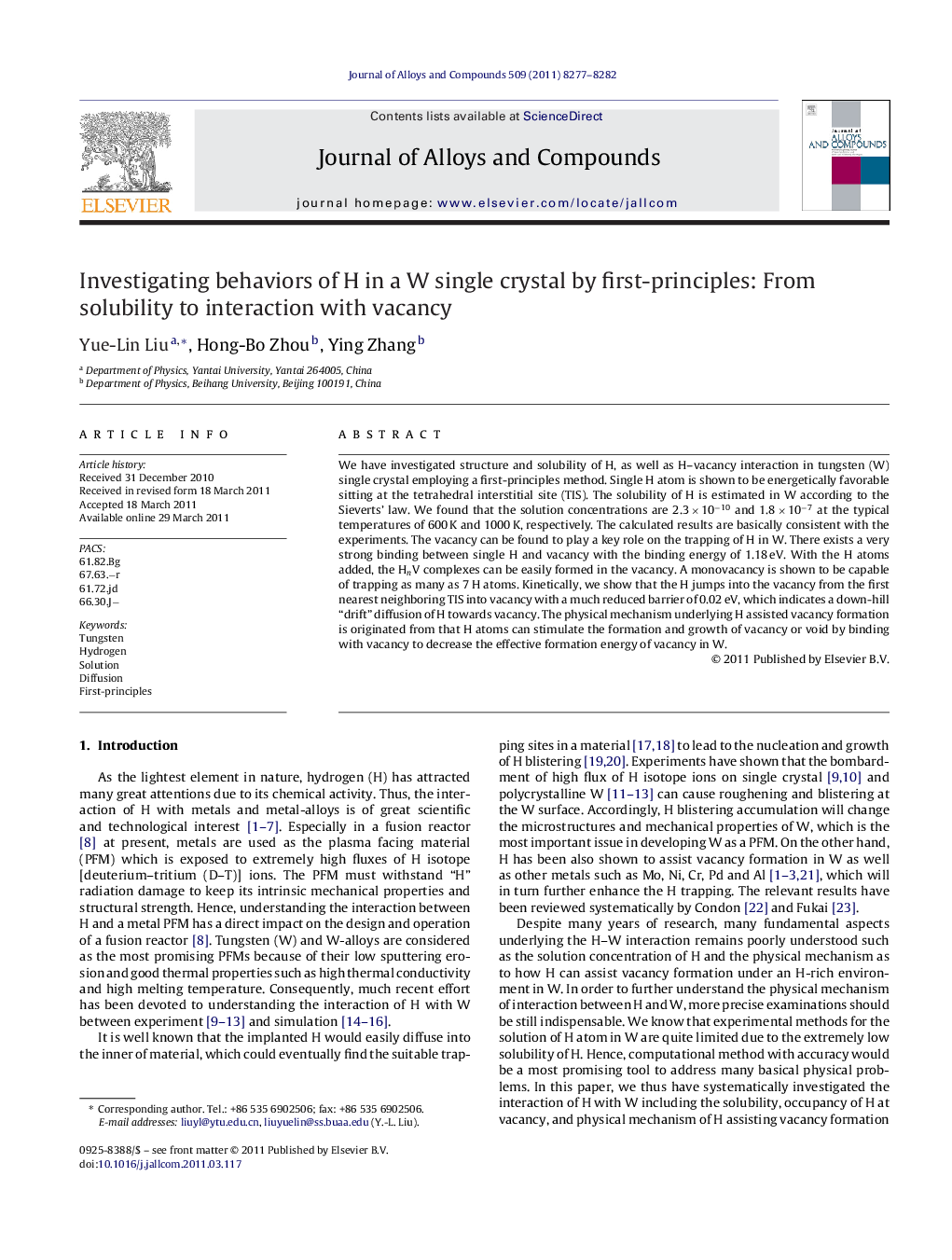| Article ID | Journal | Published Year | Pages | File Type |
|---|---|---|---|---|
| 1617092 | Journal of Alloys and Compounds | 2011 | 6 Pages |
We have investigated structure and solubility of H, as well as H–vacancy interaction in tungsten (W) single crystal employing a first-principles method. Single H atom is shown to be energetically favorable sitting at the tetrahedral interstitial site (TIS). The solubility of H is estimated in W according to the Sieverts’ law. We found that the solution concentrations are 2.3 × 10−10 and 1.8 × 10−7 at the typical temperatures of 600 K and 1000 K, respectively. The calculated results are basically consistent with the experiments. The vacancy can be found to play a key role on the trapping of H in W. There exists a very strong binding between single H and vacancy with the binding energy of 1.18 eV. With the H atoms added, the HnV complexes can be easily formed in the vacancy. A monovacancy is shown to be capable of trapping as many as 7 H atoms. Kinetically, we show that the H jumps into the vacancy from the first nearest neighboring TIS into vacancy with a much reduced barrier of 0.02 eV, which indicates a down-hill “drift” diffusion of H towards vacancy. The physical mechanism underlying H assisted vacancy formation is originated from that H atoms can stimulate the formation and growth of vacancy or void by binding with vacancy to decrease the effective formation energy of vacancy in W.
► Tungsten (W) and W-alloys are considered as the most promising plasma facing material. ► Hydrogen (H) has large effect on the properties of W. ► Defect vacancy can easily trap H atoms to form HnV complexes.
